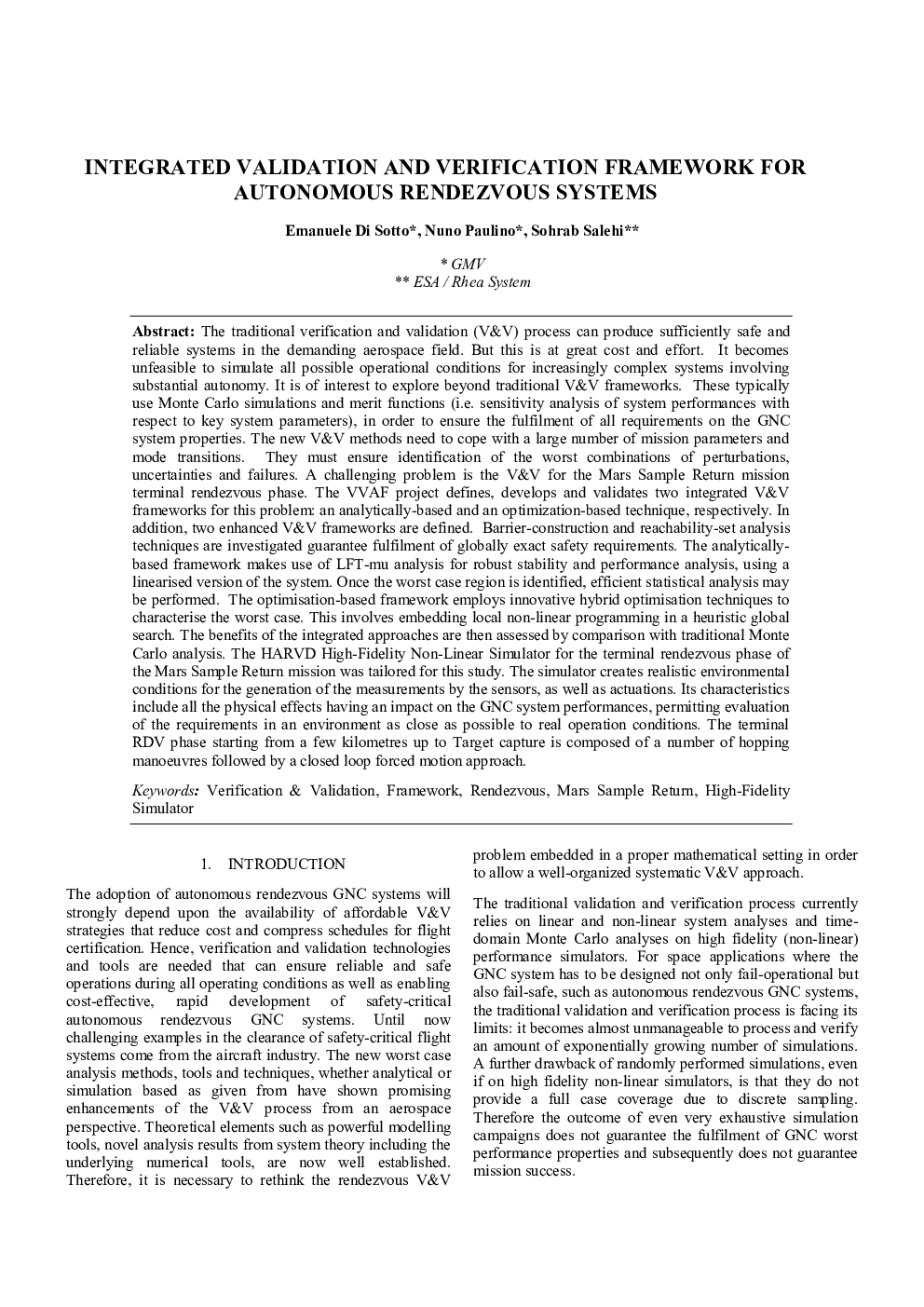| کد مقاله | کد نشریه | سال انتشار | مقاله انگلیسی | نسخه تمام متن |
|---|---|---|---|---|
| 716080 | 892216 | 2010 | 6 صفحه PDF | دانلود رایگان |

The traditional verification and validation (V&V) process can produce sufficiently safe and reliable systems in the demanding aerospace field. But this is at great cost and effort. It becomes unfeasible to simulate all possible operational conditions for increasingly complex systems involving substantial autonomy. It is of interest to explore beyond traditional V&V frameworks. These typically use Monte Carlo simulations and merit functions (i.e. sensitivity analysis of system performances with respect to key system parameters), in order to ensure the fulfilment of all requirements on the GNC system properties. The new V&V methods need to cope with a large number of mission parameters and mode transitions. They must ensure identification of the worst combinations of perturbations, uncertainties and failures. A challenging problem is the V&V for the Mars Sample Return mission terminal rendezvous phase. The VVAF project defines, develops and validates two integrated V&V frameworks for this problem: an analytically-based and an optimization-based technique, respectively. In addition, two enhanced V&V frameworks are defined. Barrier-construction and reachability-set analysis techniques are investigated guarantee fulfilment of globally exact safety requirements. The analytically-based framework makes use of LFT-mu analysis for robust stability and performance analysis, using a linearised version of the system. Once the worst case region is identified, efficient statistical analysis may be performed. The optimisation-based framework employs innovative hybrid optimisation techniques to characterise the worst case. This involves embedding local non-linear programming in a heuristic global search. The benefits of the integrated approaches are then assessed by comparison with traditional Monte Carlo analysis. The HARVD High-Fidelity Non-Linear Simulator for the terminal rendezvous phase of the Mars Sample Return mission was tailored for this study. The simulator creates realistic environmental conditions for the generation of the measurements by the sensors, as well as actuations. Its characteristics include all the physical effects having an impact on the GNC system performances, permitting evaluation of the requirements in an environment as close as possible to real operation conditions. The terminal RDV phase starting from a few kilometres up to Target capture is composed of a number of hopping manoeuvres followed by a closed loop forced motion approach.
Journal: IFAC Proceedings Volumes - Volume 43, Issue 15, 2010, Pages 315-320